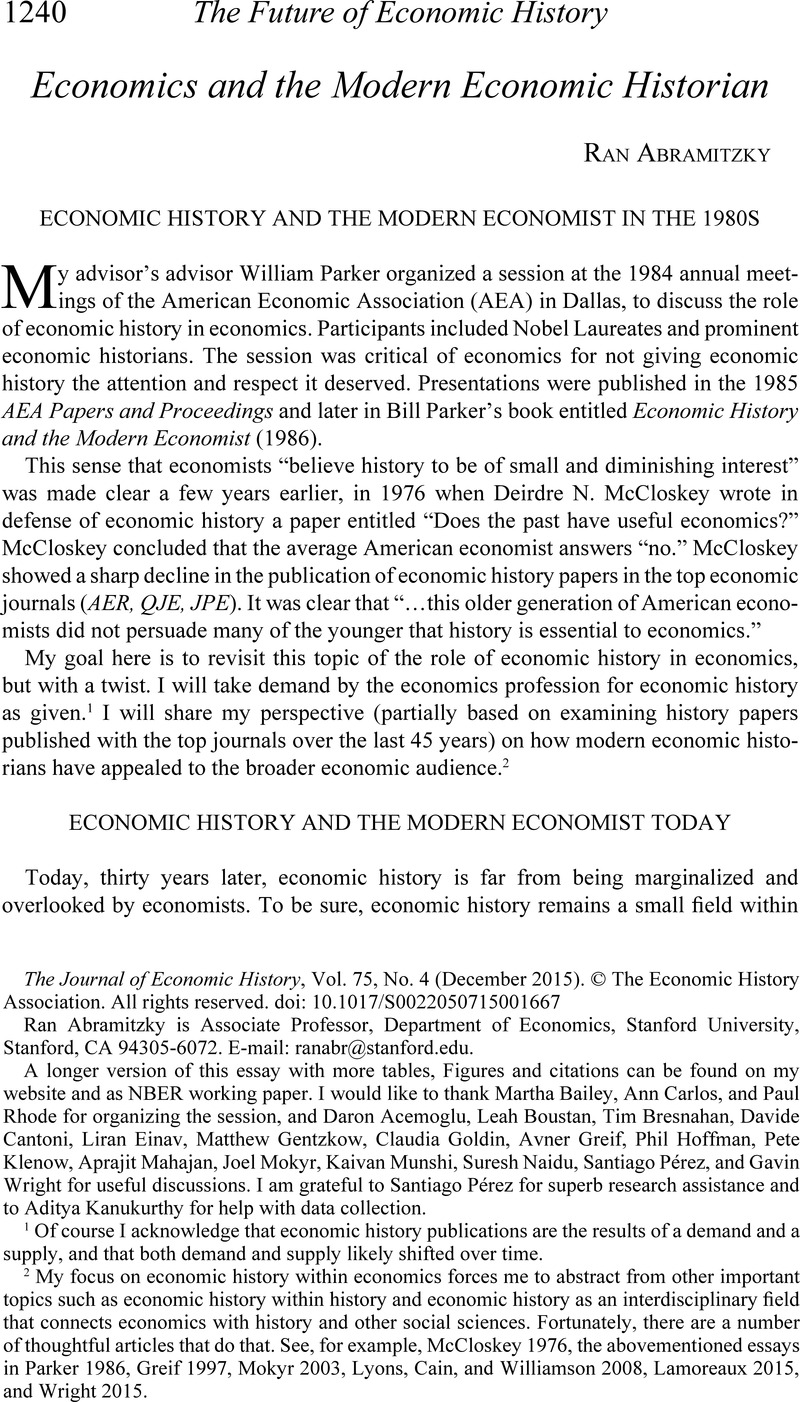Crossref Citations
This article has been cited by the following publications. This list is generated based on data provided by
Crossref.
Becker, Sascha O.
Pfaff, Steven
and
Rubin, Jared
2016.
Causes and consequences of the Protestant Reformation.
Explorations in Economic History,
Vol. 62,
Issue. ,
p.
1.
Curtis, Daniel R.
van Bavel, Bas
and
Soens, Tim
2016.
History and the Social Sciences: Shock Therapy with Medieval Economic History as the Patient.
Social Science History,
Vol. 40,
Issue. 4,
p.
751.
Klein, Herbert S.
2017.
The “Historical Turn” in the Social Sciences.
The Journal of Interdisciplinary History,
Vol. 48,
Issue. 3,
p.
295.
de Vries, Jan
2017.
Changing the Narrative: The New History That Was and Is to Come.
The Journal of Interdisciplinary History,
Vol. 48,
Issue. 3,
p.
313.
O’Sullivan, Mary
Marie, Jonathan
Montalban, Matthieu
and
Labrousse, Agnès
2018.
History, Economics and Society: Dividends of Development, Dividends of Interdisciplinarity.
Revue de la régulation,
Vol. 24,
Issue. ,
Collins, William J.
2018.
An Economist’s Guide to Economic History.
p.
347.
Seltzer, Andrew J.
and
Hamermesh, Daniel S.
2018.
Co-authorship in economic history and economics: Are we any different?.
Explorations in Economic History,
Vol. 69,
Issue. ,
p.
102.
Margo, Robert A.
2018.
The integration of economic history into economics.
Cliometrica,
Vol. 12,
Issue. 3,
p.
377.
Geloso, Vincent J.
2018.
An Economist’s Guide to Economic History.
p.
21.
Guriev, Sergei
2019.
Gorbachev versus Deng: A Review of Chris Miller’s The Struggle to Save the Soviet Economy.
Journal of Economic Literature,
Vol. 57,
Issue. 1,
p.
120.
Becker, Sascha O.
and
Ferrara, Andreas
2019.
Consequences of forced migration: A survey of recent findings.
Labour Economics,
Vol. 59,
Issue. ,
p.
1.
Ruggles, Steven
and
Magnuson, Diana L.
2019.
The History of Quantification in History: The JIH as a Case Study.
The Journal of Interdisciplinary History,
Vol. 50,
Issue. 3,
p.
363.
Frank, Björn
2019.
Neue Ordnungsökonomik. Zur Aktualität eines kontextualen Forschungsprogramms: Kommentar zum Beitrag von Stefan Kolev, Nils Goldschmidt und Joachim Zweynert.
List Forum für Wirtschafts- und Finanzpolitik,
Vol. 44,
Issue. 4,
p.
661.
Wehrheim, Lino
2019.
Economic history goes digital: topic modeling the Journal of Economic History.
Cliometrica,
Vol. 13,
Issue. 1,
p.
83.
Battilossi, Stefano
and
Yago, Kazuhiko
2020.
Handbook of the History of Money and Currency.
p.
1.
Zimran, Ariell
2020.
Recognizing Sample-Selection Bias in Historical Data.
Social Science History,
Vol. 44,
Issue. 3,
p.
525.
Michalopoulos, Stelios
and
Papaioannou, Elias
2020.
Historical Legacies and African Development.
Journal of Economic Literature,
Vol. 58,
Issue. 1,
p.
53.
Jaremski, Matthew
2020.
Today’s economic history and tomorrow’s scholars.
Cliometrica,
Vol. 14,
Issue. 1,
p.
169.
McWatters, Cheryl Susan
2020.
Accounts and assemblage: twists, turns, and the tales we tell.
Accounting History Review,
Vol. 30,
Issue. 3,
p.
251.
Battilossi, Stefano
and
Yago, Kazuhiko
2020.
Handbook of the History of Money and Currency.
p.
1.
